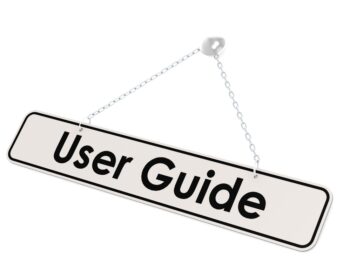One of the most important functions of the workers’ compensation adjuster is the establishment of reserves on each claim file. The reserves for the claim file are the amount or number of dollars needed to cover the legal and financial obligations of the insurer arising from the workers’ compensation claim. Sarbanes-Oxley and other regulations require insurers to account accurately for their liabilities, which would include the workers’ compensation claims of the insurer.
The three types of reserves normally established on every lost time workers’ compensation claim are indemnity reserves, medical reserves and expense reserves. The work comp adjuster should use a reserve work sheet to analyze the amount needed for each type of reserve on the claim file. If the adjuster does not take time to formulate properly the number of reserves using a reserve worksheet, it is often said the adjuster is using the “wag” method…….the wild-ass guess method.
Click Link to Access Free PDF Download
“8 ‘Think Outside the Box’ Tactics to Settle Workers’ Comp Claims”
For an accurate analysis of what dollar amount is needed for each of the reserves, each of the three types of reserves are further divided into various subcategories. To assist our readers we will provide these subcategories as we illustrate the three main types of reserves
INDEMNITY RESERVES:
Indemnity reserves are establish to pay the employee a disability benefit for the time the employee is unable to work or to compensate the employee for the partial or total loss of a body function. The five types of indemnity reserves are temporary total disability (TTD), temporary partial disability (TPD), permanent partial disability (PPD), permanent total disability (PTD) and death benefits.
To establish the amount of the initial reserves for TTD, TPD, PPD and PTD, the work comp adjuster using a reserve worksheet, either paper or electronic, will calculate the employee’s average weekly wage (AWW) from the payroll information provided by the employer. The average weekly wage will be multiplied by two-thirds (in most jurisdictions) to determine the “comp rate”–the amount the employee will be paid for each week the employee is unable to work.
In this example we will have an employee earning $750.00 per week and a comp rate of $500.00 per week. Based on the nature of the injury and the initial medical report, the adjuster anticipate the employee will be off work 12 weeks, will return to work on light duty, one-half days, for another 6 weeks, and then will return to work full time with a 5% permanent partial disability rating (with a 100% rating equal to 400 weeks).
The calculations on the reserve worksheet would look like this:
TTD weeks___12___ X comp rate $500 = $6,000
TPD weeks 6 X comp rate $250 = $1,500
PPD weeks 20 X comp rate $500 = $10,000 (5% of 400 = 20)
PTD weeks________ X comp rate _____ = ______
Other benefits ______
Total Estimated Indemnity Reserve $17,500
In this example the PTD section is left blank as there is no reason to believe the employee will be permanently disabled. The “other” benefits section which could include death, burial, disfigurement or spousal/dependent indemnity is blank because none of them would apply.
MEDICAL RESERVES:
In the medical reserves, the work comp adjuster will estimate the anticipated medical cost for each type of medical treatment the injured employee will need. The skilled adjuster who has handled numerous work comp claims in the jurisdiction will normally be accurate within 10%-15% of the final medical cost of the routine claim.
To establish the amount of the initial medical reserve, the adjuster will estimate the cost of each type of anticipated medical service. Based on the nature of the injury and the initial medical report, the adjuster anticipates the medical services the employee will need. The medical section of the reserve worksheet will look like this:
Physician fees $3,000 Hospital fees $5,000
Surgical cost $4,000 Physical Therapy $2,500
Diagnostic test $1,000 Drugs $ 500
Ambulance ______ Attendant Care ______
Medical Rehab. ______ Other ______
Total Estimated Medical Care Reserve $16,000
In this example the medical care cost the adjuster does not expect to be incurred on the work comp claim is left blank.
EXPENSES:
There is much more variance in how insurance companies approach reserving for expenses then there is in the reserving for indemnity benefits or medical benefits. Some insurance carriers will have only one reserve for all claim expenses, while other insurance carriers will have separate expense reserves for litigation, vocational rehabilitation, private investigators, etc.
There are claim cost that do not neatly fit into expenses or medical. Independent medical evaluations, medical record fees, medical management fees and medical equipment rental will be included in the medical reserve by one insurance carrier and will be included in the expense reserve by the next insurance carrier. For the purpose of this explanation of reserves, we will include these items under the expense reserve.
Based on the nature of the injury and the initial medical report, the adjuster anticipates the expenses associated with the work comp claim file handling and getting the claim approved at the work comp board. The expense section of the reserve worksheet will look like this:
Independent Medical Exam $ 750 Medical Record Fees $ 250
Medical Management Fees $2,500 Vocational Counseling ______
Job Assessment Fees ______ Vocational Training ______
Defense Counsel 20 hrs x $150 $3,000 Subpoenas/Transcription ____
Expert witnesses ______ Work Comp Board cost $ 500
Surveillance ____ x _____ ______ Other expenses _____
Total Estimated Expense Reserve $7,000
In this example the adjuster does not anticipate incurring any cost for vocational rehabilitation, for expert witness or for surveillance.
TOTAL CLAIM RESERVES:
In our sample reserve worksheet, the adjuster’s initial evaluation of the claim includes $17,500 for indemnity benefits, $16,000 for medical benefits and $7,000 for claim expenses, for a total reserve on this work comp file equaling $40,500 ($17,500 + $16,000 + $7,000).
The adjuster knows the reserve may need to be changed when additional medical information becomes available of there are other developments within the claim. The employee could recover faster than anticipated and the indemnity reserves would be adjusted downward. Or, the employee’s surgery does not go well and the surgery has to be re-done. The employee is off work longer than anticipated and the medical cost is higher than originally expected, resulting in the indemnity reserve and the medical reserve being increased.
The adjuster needs to be both flexible and accurate at the same time in establishing and updating the claim file reserves. By applying the experience the adjuster has with careful consideration of the cost related to the employee’s injury, the adjuster should be able to maintain accurate reserves on the work comp claim file.
Amaxx Risk Solutions, Inc. can be contacted at: RShafer@ReduceYourWorkersComp.com or 860-553-6604.
WC Calculator: http://www.reduceyourworkerscomp.com/calculator.php
Do not use this information without independent verification. All state laws vary. You should consult with your insurance broker or agent about workers’ comp issues.
©2010 Amaxx Risk Solutions, Inc. All rights reserved under International Copyright Law. If you would like permission to reprint this material, contact Info@ ReduceYourWorkersComp.com.














